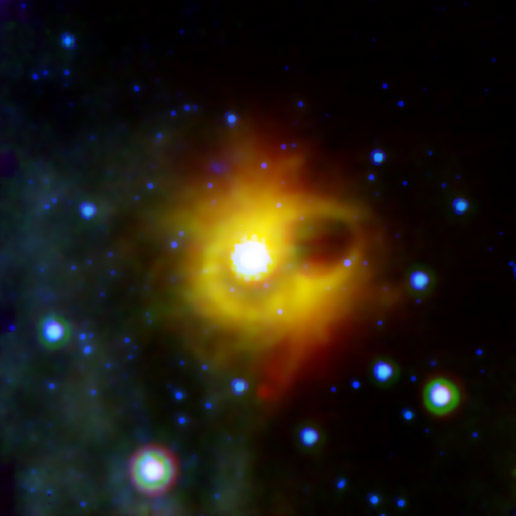If only it were closer to Halloween. NASA's Spitzer Space Telescope has captured an infrared image showing a ghostly ring extending seven light-years across around the corpse of a massive star, called a magnetar . The collapsed star, called Magnetar SGR 1900+14, is unlike anything ever seen before. Scientists believe this object may have formed in 1998 when the magnetar erupted in a giant flare. They believe the crusty surface of the magnetar cracked, sending out a flare, or blast of energy, that excavated a nearby cloud of dust, leaving an outer, dusty ring. "The universe is a big place and weird things can happen," said Stefanie Wachter of NASA's Spitzer Science Center.
Wachter is lead author of a paper about the findings in this week's Nature. The ring is oblong, with dimensions of about seven by three light-years. It appears to be flat, or two-dimensional, but the scientists said they can't rule out the possibility of a three-dimensional shell.
Magnetars are formed when a giant star ends its life in a supernova explosion, leaving behind a super dense neutron star with an incredibly strong magnetic field. These are the cores of massive stars that blew up in supernova explosions, but unlike other dead stars, they slowly pulsate with X-rays and have tremendously strong magnetic fields. The ring seen by Spitzer could not have formed during the original explosion, as any material as close to the star as the ring would have been disrupted by the supernova shock wave.
This composite image was taken using all three of Spitzer's science instruments. The blue color represents 3.6-micron infrared light taken by the infrared array camera, green is 16-micron light from the infrared spectograph, and red is 24-micron radiation from the multiband imaging photometer.
Original News Source:
NASA
 Universe Today
Universe Today
